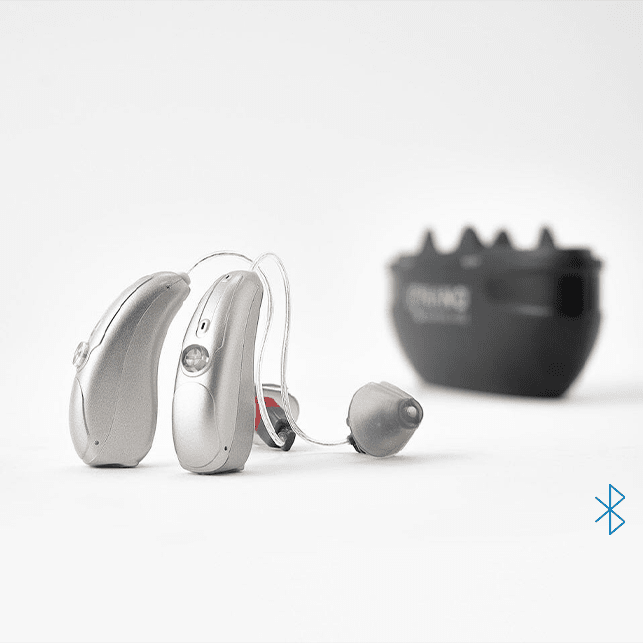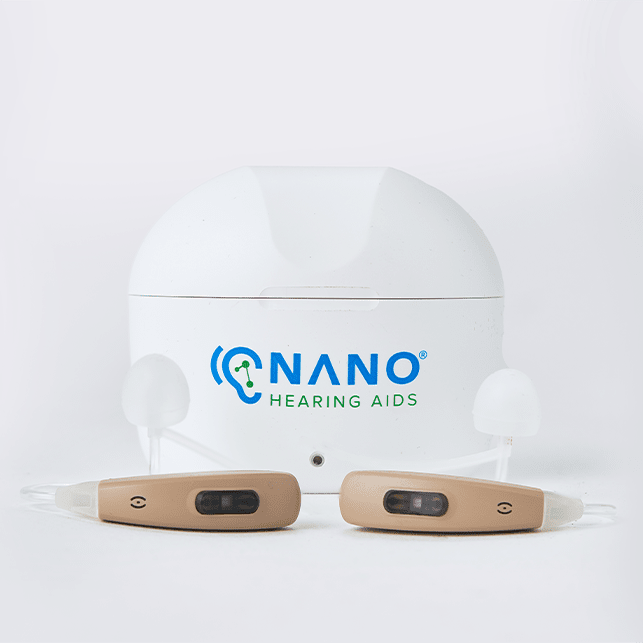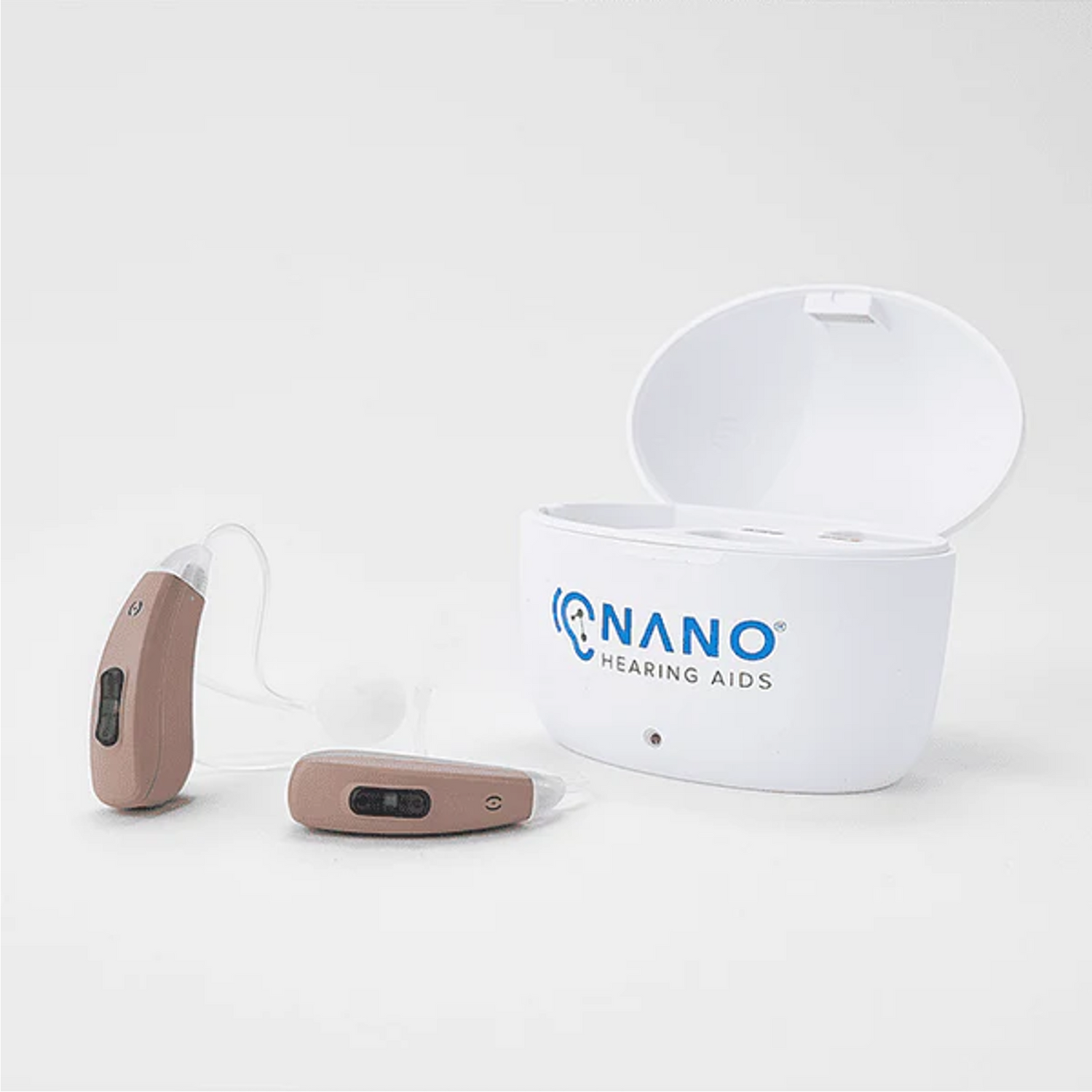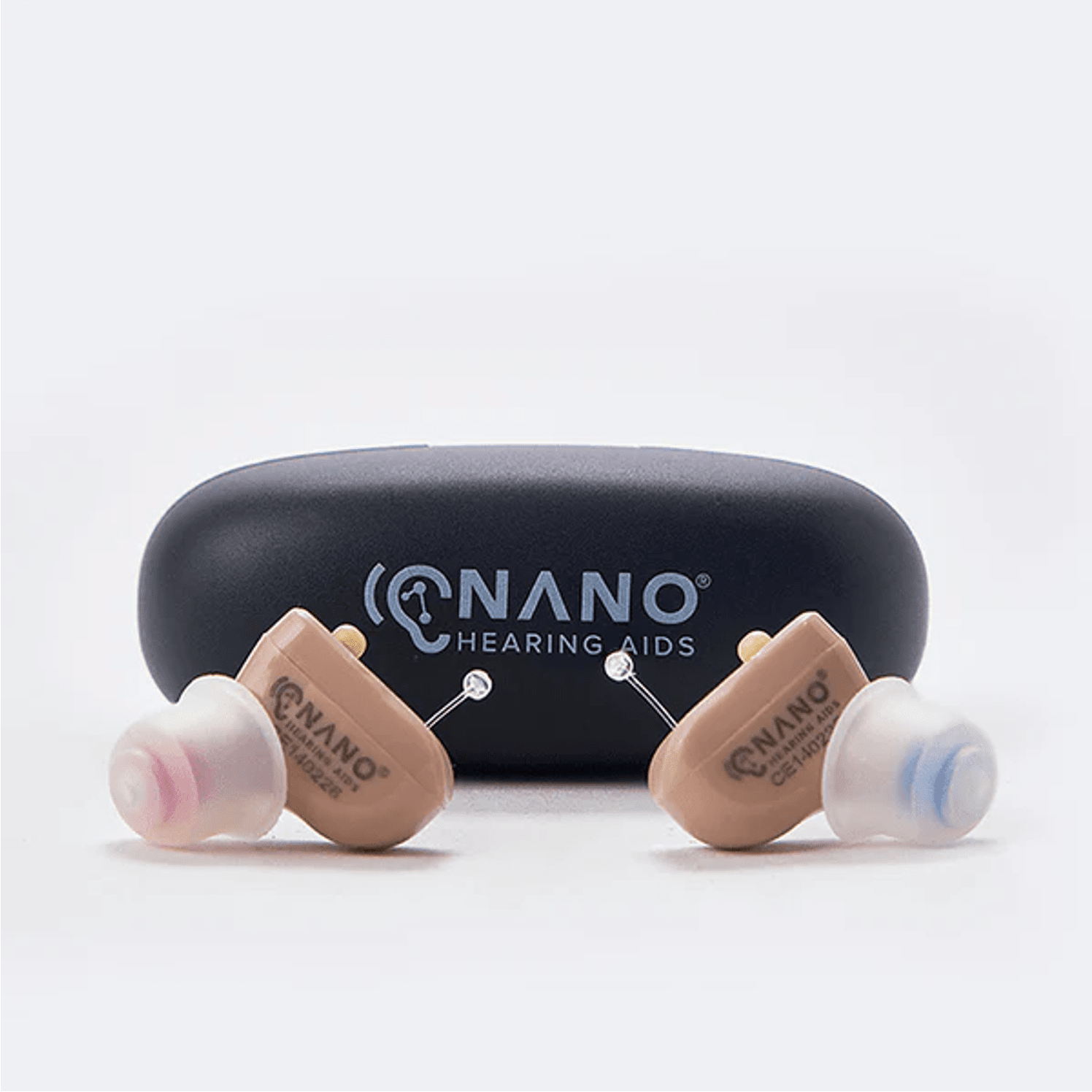Key Takeaways
- Nano hearing aids and MDHearing are both over-the-counter (OTC) devices designed for perceived mild to moderate hearing loss.
- Nano hearing aids are FDA registered, Class I devices, making them generally safe with minimal risk.
- MDHearing provides a range of models with varying features and mostly in the same price range as that of Nano.
NANO Hearing Aids are FDA-registered, Class I devices. Our OTC hearing aids are designed for individuals over 18 years of age with perceived mild to moderate hearing impairment. With prices starting at just $297, they offer a viable solution for those looking to improve their hearing without breaking the bank.
Comparing Nano and MDHearing
Overview of Nano
Nano is a US-based provider of OTC hearing aids for individuals with perceived mild to moderate hearing loss. Unlike personal sound amplification products, Nano’s devices are true hearing aids, focusing on affordability without compromising quality.
The company offers a wide array of devices, ranging from entry-level aids with push-button controls to more advanced models with app customization options.
Features of Nano Hearing Aids
- Low Cost: Nano hearing aids are positioned as an affordable option, with prices ranging from $297 to $697 per pair, depending on the model.
- Rechargeable Batteries: All Nano hearing aid models come with rechargeable batteries and charging cases.
- Aids for Different Needs: Nano offers CIC, ITE, RIC and BTE hearing aid styles to accommodate different preferences and ear shapes.
- Smartphone App Connectivity: Higher-end Nano models can connect to a smartphone app, allowing for some increased sound adjustment options.
Pros and Cons of Nano Hearing Aids
Nano’s Advantages
- Affordable Prices: As mentioned earlier, Nano offers some of the most budget-friendly hearing aid options in the US.
- Rechargeable Batteries: Unlike other brands that only offer rechargeability options on premium models, Nano made sure that even the entry-level devices no longer need battery swaps.
- 45-day Money-Back Guarantee: Nano products come with a 45-day return policy, allowing customers to try the hearing aids risk-free.
- 24/7 Customer Support: Nano devices are supported by a lifetime customer support team that is ready to respond to customer queries on a 24-hour basis.
Nano’s Drawbacks
- Not Water Resistant: None of the Nano hearing aid models are water resistant.
- No AI: Nano has yet to introduce an AI-enabled device--something that is in their line-up to do in 2025 and 2026.
Overview of MDHearing
MDHearing aids focus on simplicity and user-friendliness
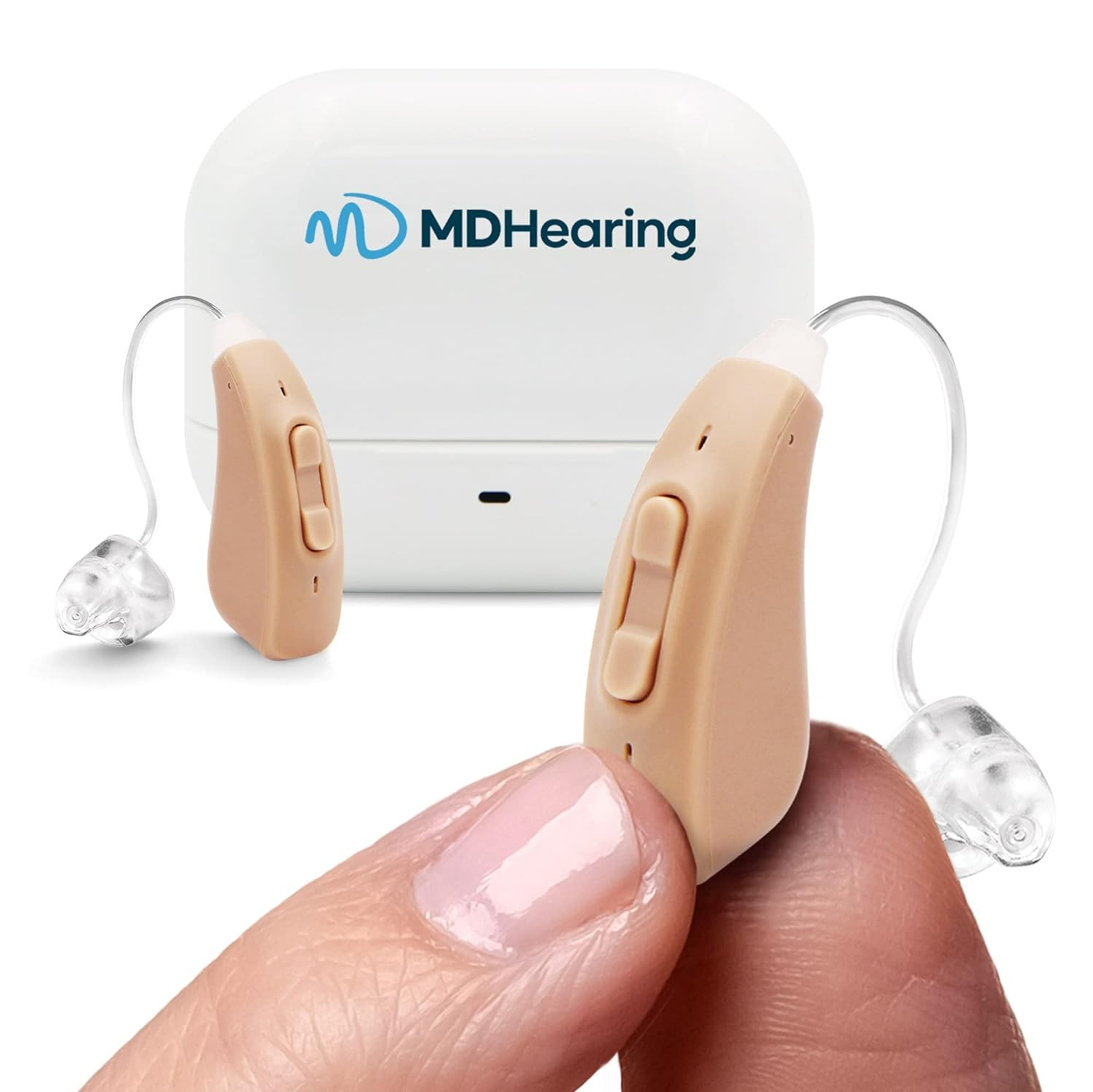
Like Nano, MDHearing offers a range of user-friendly models for perceived mild to moderate hearing loss. Their devices allow easy adjustment of volume and settings without the need for a smartphone app.
Features of MDHearing
- Focus on Affordability: With its most premium device retailing at $397, MDHearing can be recommended to those seeking budget-friendly aids.
- Simplicity: All MDHearing devices sport simple push-button controls ideal for those not keen on tinkering with customization options.
Pros and Cons of MDHearing
MDHearing’s Advantages
- Pros Affordable Aids: Like Nano, MDHearing aids are positioned as budget-friendly options.
- Rechargeable Devices: In addition to being budget-friendly, MDHearing only offers rechargeable models.
- Audiologist Support: MDHearing offers access to licensed hearing specialists for fitting adjustments and customer support via phone, email, or chat.
MDHearing’s Disadvantages
- Limited Options: Unlike Nano, MDHearing's offerings are limited, with only two CIC and two BTE devices available.
- No App Customization: The brand caters to customers who prefer simple controls, thus no app-based customization is offered.
Market Position and Target Users
Nano and MDHearing both target budget-conscious individuals seeking affordable, high-quality hearing aids. Their devices emphasize simplicity and cater to users who prefer straightforward operation over advanced features.
Cost-Effectiveness
OTC hearing aids like Nano and MDHearing are significantly more affordable than traditional hearing aids, which can cost thousands. Rechargeable batteries are available in both brands, saving money over time.
- Nano hearing aids: Typically priced between $297 and $697 per pair.
- MDHearing devices: Typically priced between $299 and $397 per pair.
Accessibility and Ease of Use
Both brands cater to customers looking for a simple device that can be controlled by traditional buttons. Nano, however, has a large advantage, as it offers devices—like the Audacity RIC—with Bluetooth streaming and more customization options via a dedicated app.
Why Nano Hearing Aids Stand Out
Nano's First Ear Pro BTE model offers advanced features and a sleek design for users seeking high-quality, cost-effective hearing aids.
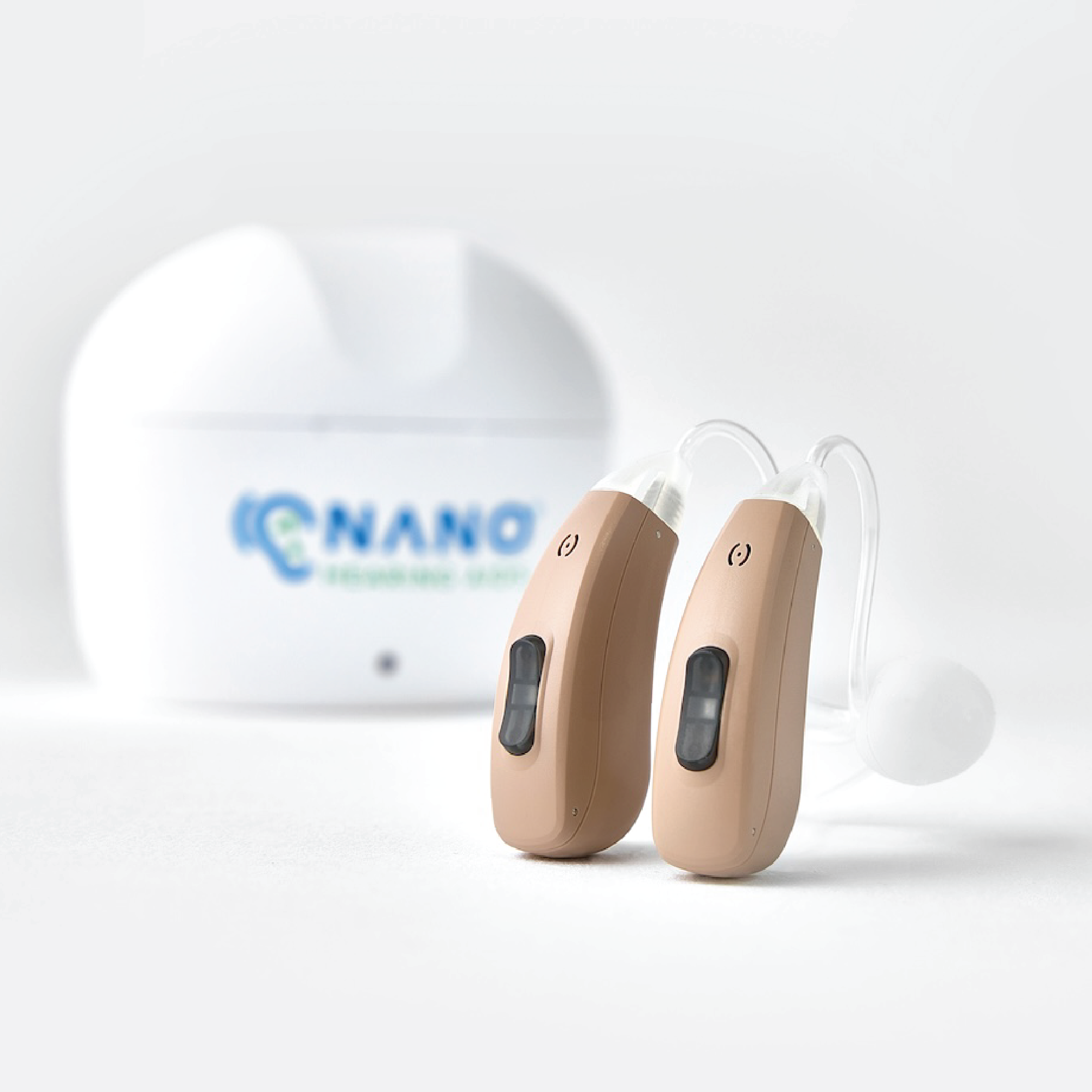
Between MDHearing and Nano, Nano stands out due to the wide array of devices it offers, which allows the brand to cater to a broader demographic, and the level of support it provides, thanks to its 24/7 customer support team.
Budget-conscious buyers, for instance, can opt for the capable First Ear Plus BTE, which retails for only $297. Those seeking advanced features like app controls can choose Nano's Audacity RIC, a flagship device that remains reasonably priced.
Frequently Asked Questions (FAQ)
What types of hearing loss are best suited for Nano and MDHearing?
Nano and MDHearing are both suitable for perceived mild to moderate hearing loss. They are not recommended for severe or profound hearing loss, which usually requires prescription-based hearing aids.
How do I determine which hearing aid is right for me?
Consider your hearing loss level, lifestyle, and budget. Both Nano and MDHearing offer a range of low-cost models that could fit your needs, with Nano offering a wider selection.
Can I return or exchange these hearing aids if they don't work for me?
Yes, both Nano and MDHearing have return and exchange policies, with Nano offering a 45-day money back guarantee. Review each brand's specific terms and conditions, as they usually offer a trial period during which you can return or exchange the hearing aids if they don't meet your needs.
How long is the battery life for both Nano and MDHearing devices?
Battery life varies based on the model and usage. Rechargeable models typically last a full day on a single charge, while disposable battery models can last several days to a couple of weeks, depending on the battery type and usage.

